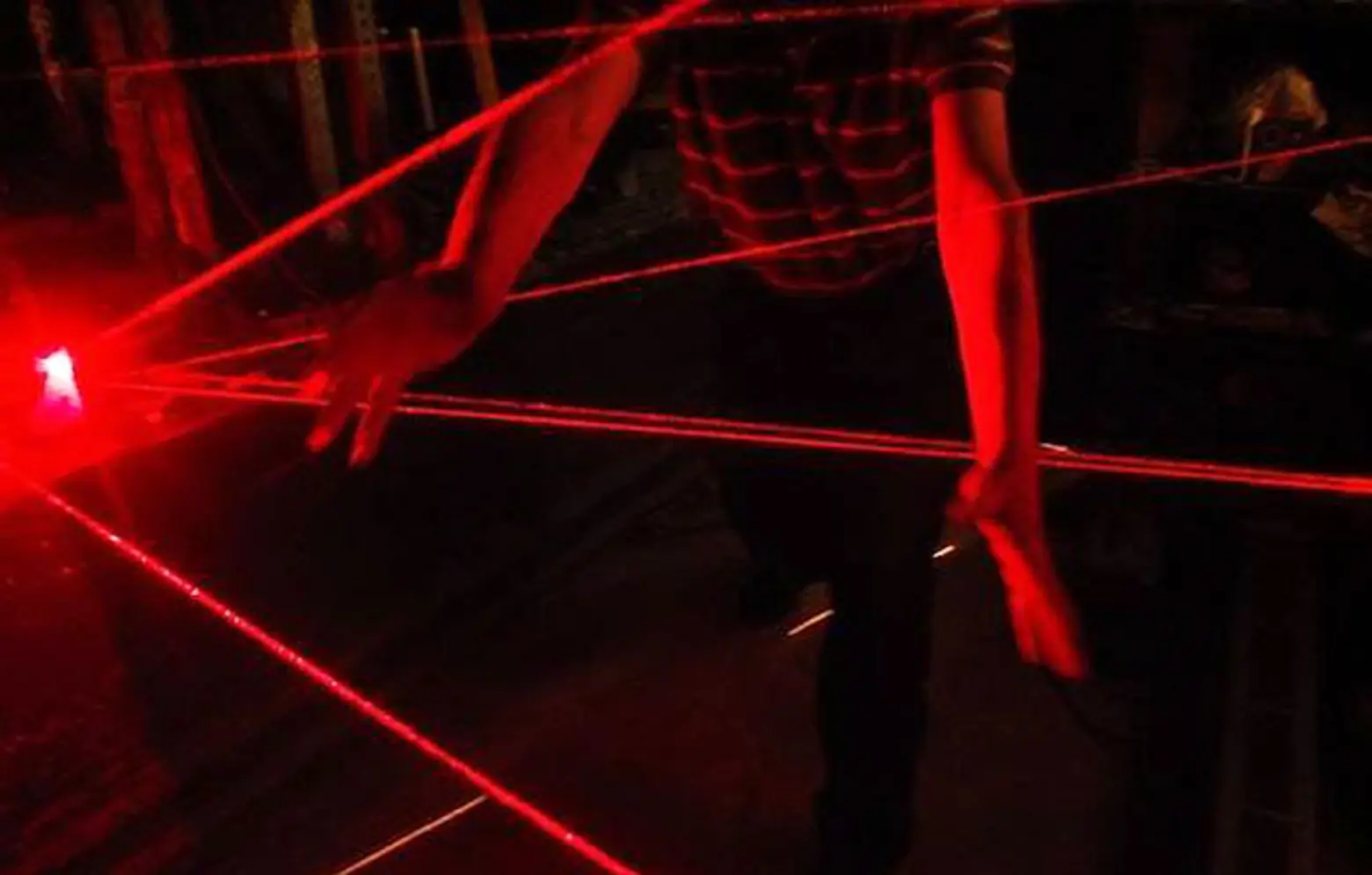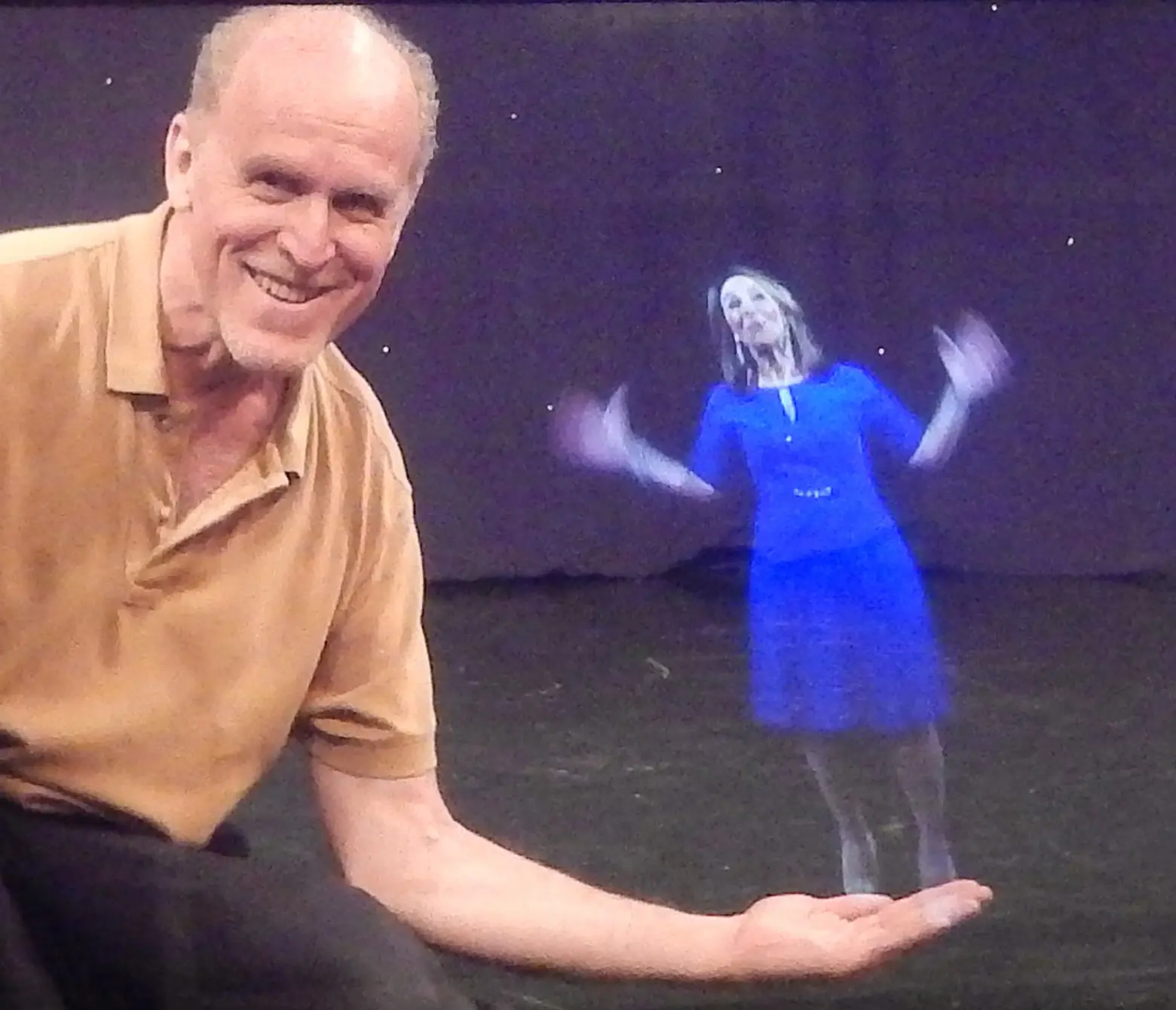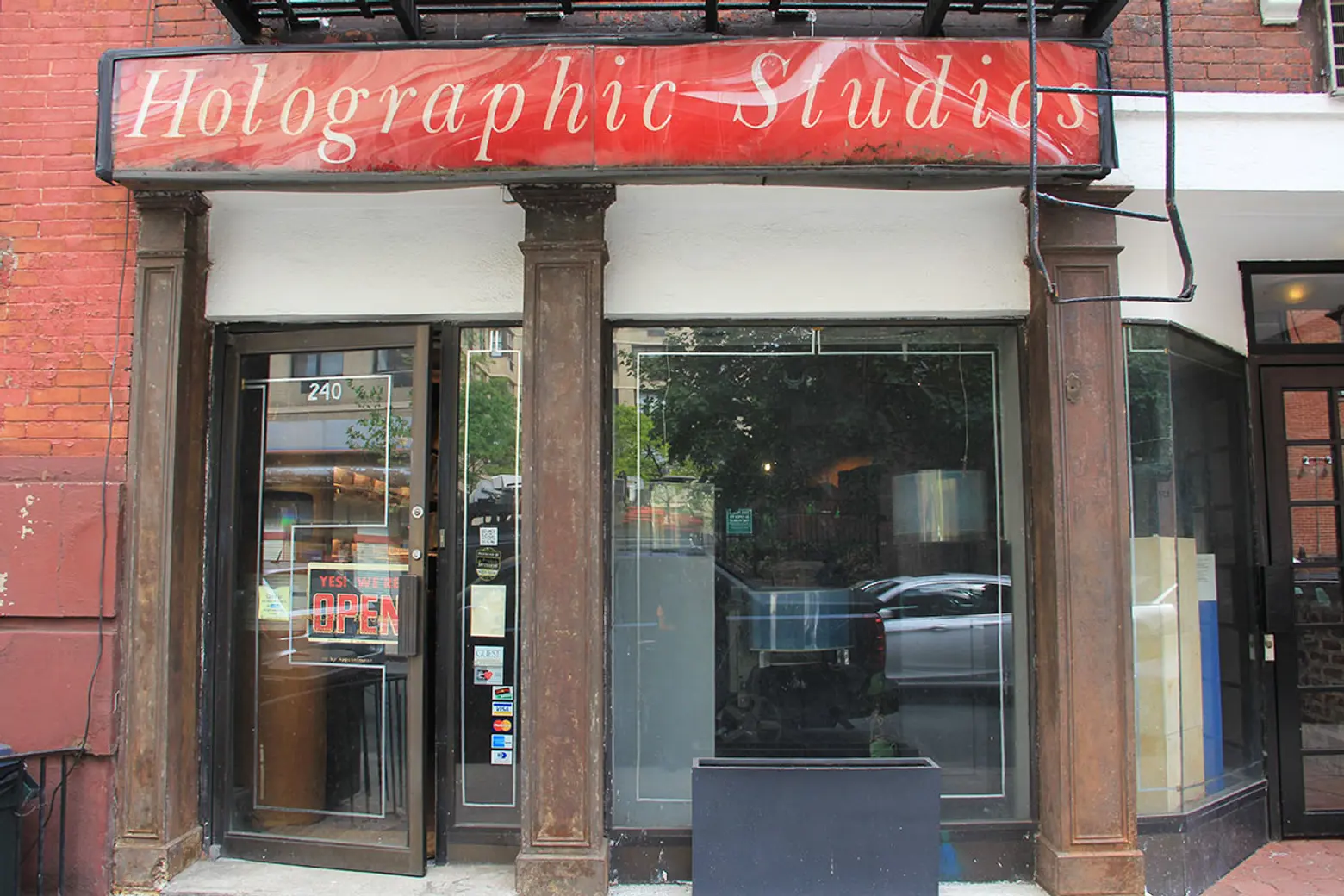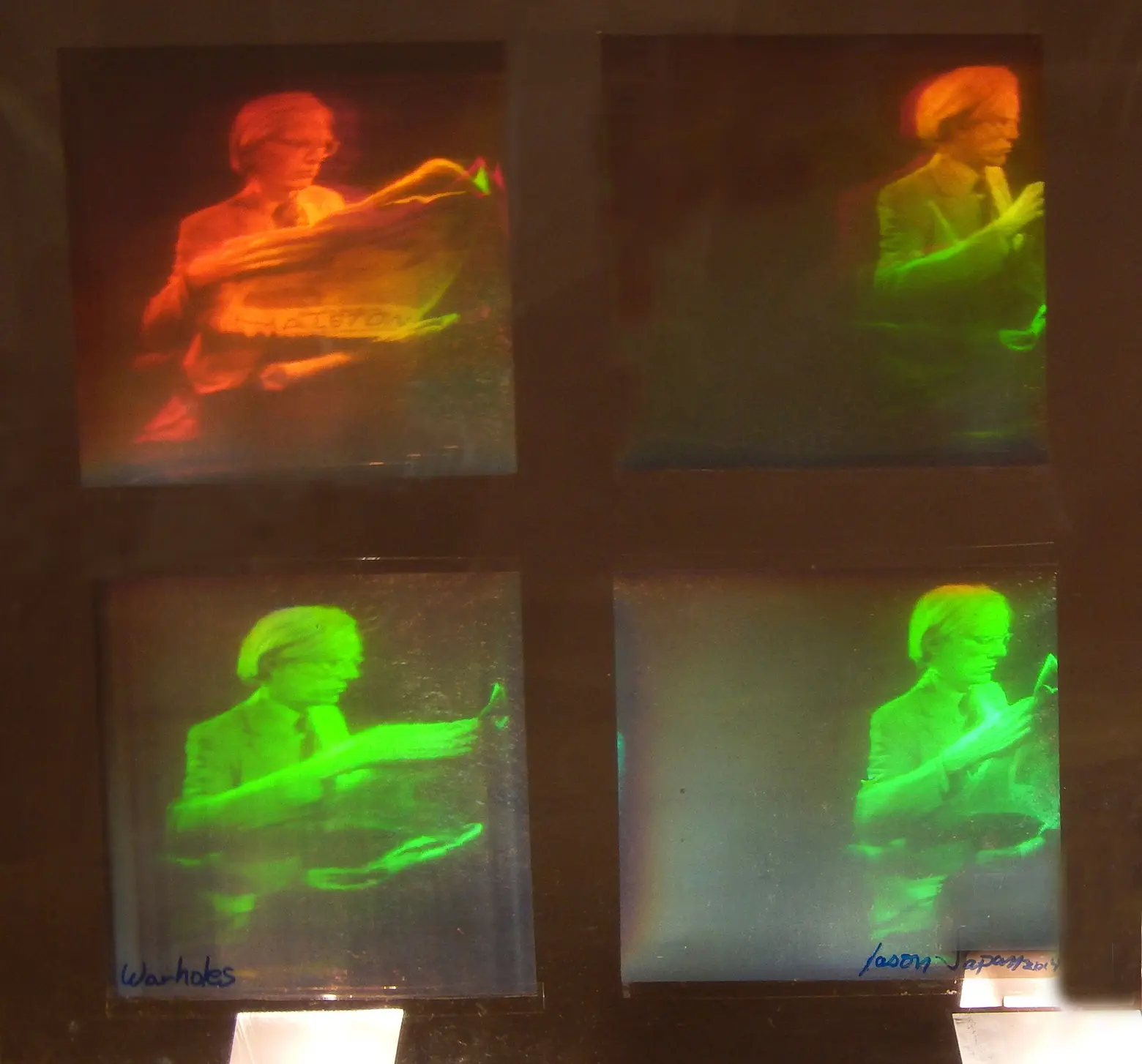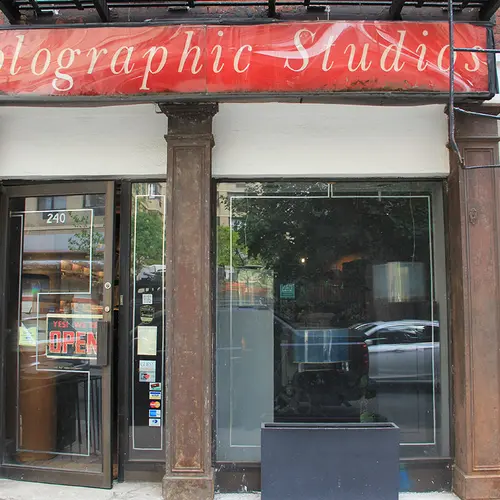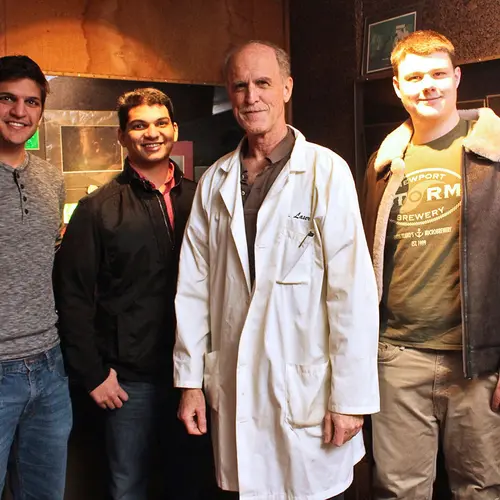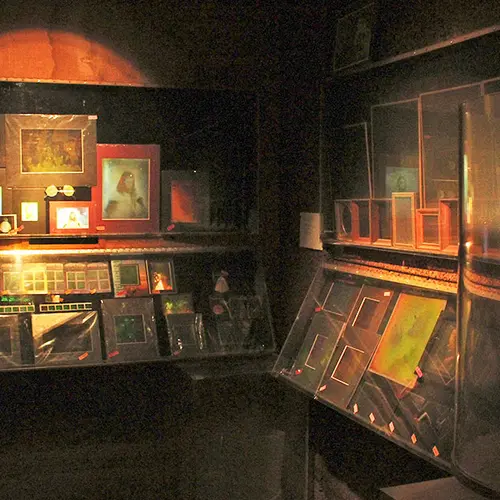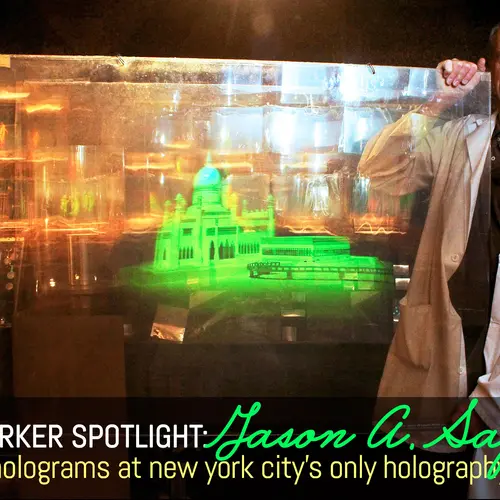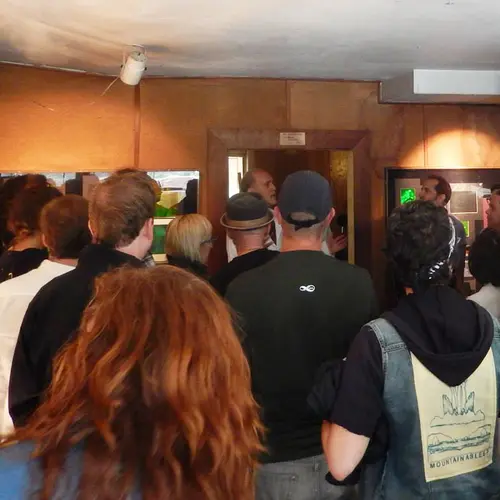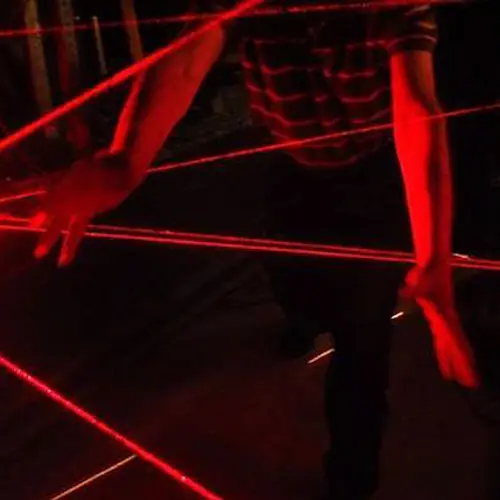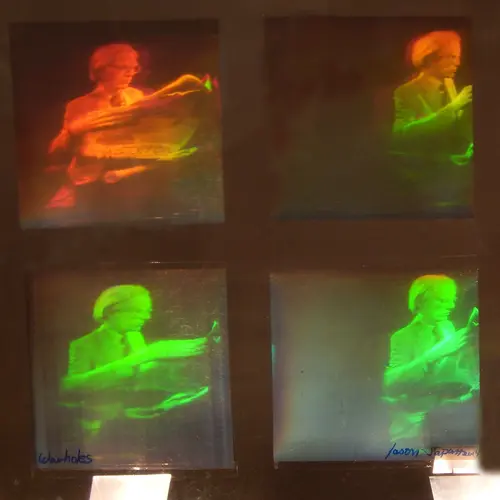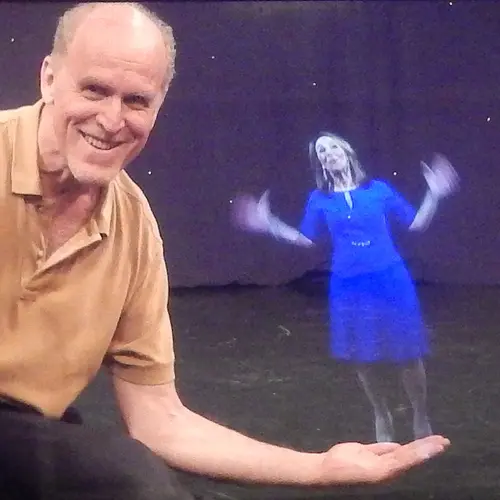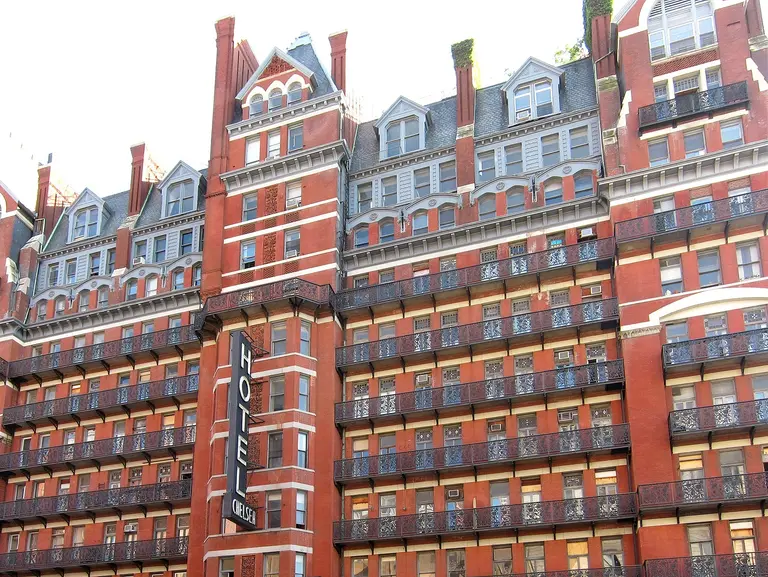Spotlight: Jason Arthur Sapan Makes Holograms at NYC’s Only Holography Gallery
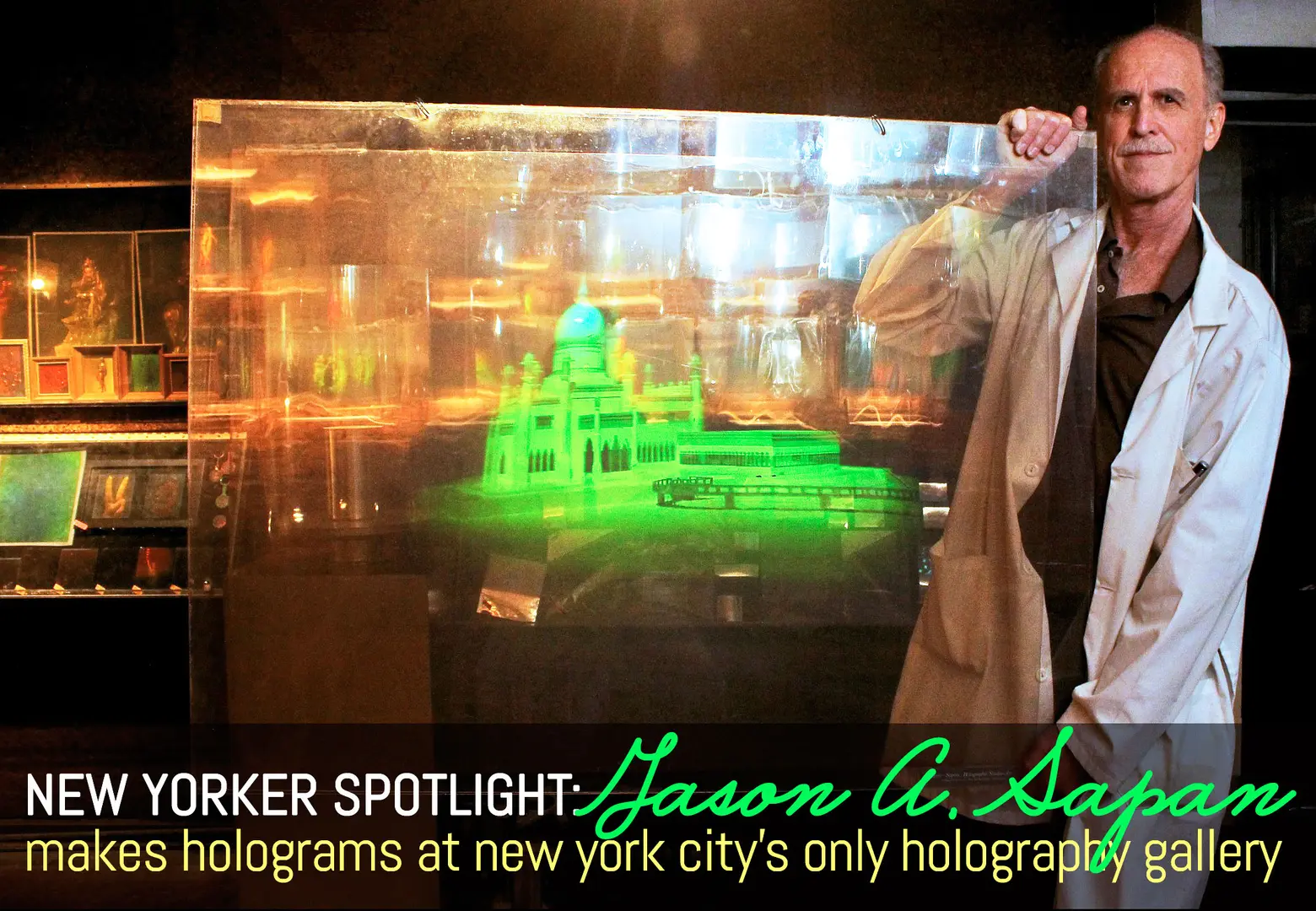
In an old blacksmith’s forge on East 26th Street, there is a subterranean laser laboratory. It’s here that Jason Arthur Sapan, also known as Doctor Laser, makes holograms of everything imaginable at Holographic Studios. Jason describes his underground lab as being akin to Doctor Brown’s laboratory in Back to the Future (sans time travel, of course). A hologram, “is a three-dimensional image that is created using laser light,” he explains. “We record the surface of an object the way that a piece of Play-Doh pressed up against an object takes an impression of its shape,” creating something that’s “lifelike and can appear to float in front or behind the film.”
Jason first became interested in holography in the late 1960s, and has been practicing the medium full time since founding Holographic Studios over forty years ago. He also teaches at NYU Tisch’s ITP (Interactive Telecommunications Program), where he works with graduate students. He’s created holograms of politicians ranging from President Bill Clinton to Mayor Ed Koch and celebrities such as Billy Idol and Andy Warhol. The studio possesses the world’s oldest gallery of holography, which attracts out-of-town visitors, locals, and even youngsters through classes and an internship program.
6sqft recently spoke with Jason to find out about the inspiration for his career in holography and how much joy it brings him to share this medium with the world.
How did you discover holography?
My dad was an electrical engineer. His company down in Greenwich Village used to do a lot of display work for the old phone company. Whenever Bell Laboratories [today’s Westbeth Artists Housing] would get a new invention, they would hand it off to him like, “Here’s a transistor. Can you make an exhibit so people can understand this technology in a simple way?” By the time the World’s Fair came in 1964/65, they had him build the ground floor of the AT&T Pavilion with picture phones [skype-like]. One of the things they were working on at Bell Labs in the early ’60s was lasers and holograms, so I got introduced to it through him. I got my first job in 1968 when there was an exhibition of holography and new technology at the Time Life building; I was one of the early people playing with this medium.
Do you remember your reaction to seeing those very first holograms?
It was just amazing, and remember we’re talking about going back to the 1960s when television sets had pretty low resolution and most of us were watching in black and white; color was an exception and not the norm in those days. And here’s a technology that was literally light years into the future, so it was pretty incredible to see something a) with laser light and b) with full dimension without having to wear some funky red, green glasses to see it.
How did you take that amazement and turn it into a career?
In the beginning I didn’t think it was going to be a career. I ended up doing other things for a while, most notably working at a recording studio on West 44th Street called Record Plant where I got to work with people like John Lennon. That was a pretty good little tangent to go off on, but while I was there, I started hearing more and more bugs about holograms. I decided I’d rather do that than almost anything else.
I didn’t know much in those days about marketing, so I went to the public library and asked the librarians. They said you need the advertisers Redbook, a directory with all the different ad agencies and art and creative directors. I sat down at my old Smith Corona typewriter, typed up a letter, had 100 signed copies made, and lo and behold someone hired me.
Who came up with your name Doctor Laser?
I think it was back around 1974/75. We were building something, so I had on a lab jacket, a big pair of rubber gloves, and a pair of goggles. The guy I was working with turned to look at me and said, “Ah, it’s Doctor Laser.” It just stuck.
The building Holographic Studios is in has a unique history. Can you share a bit about this?
Here’s the metaphor, and I love sharing this because it’s so unique: First guy here, blacksmith, took rod iron, heated it until it glowed red, hammered into the shape of horseshoes. Second guy, medical equipment man, took stainless steel, made it glow red hot, hammered it into the shape of medical equipment. Third guy, holographer, takes objects, makes them glow red with a laser, and records their shape. Coincidence, I think not.
The funny thing is many decades ago, and not so far away on 29th Street, Nikola Tesla had his place. It’s a part of town that seems to attract people who are of a like mind–innovators looking at the future who are probably out of step with their own era.
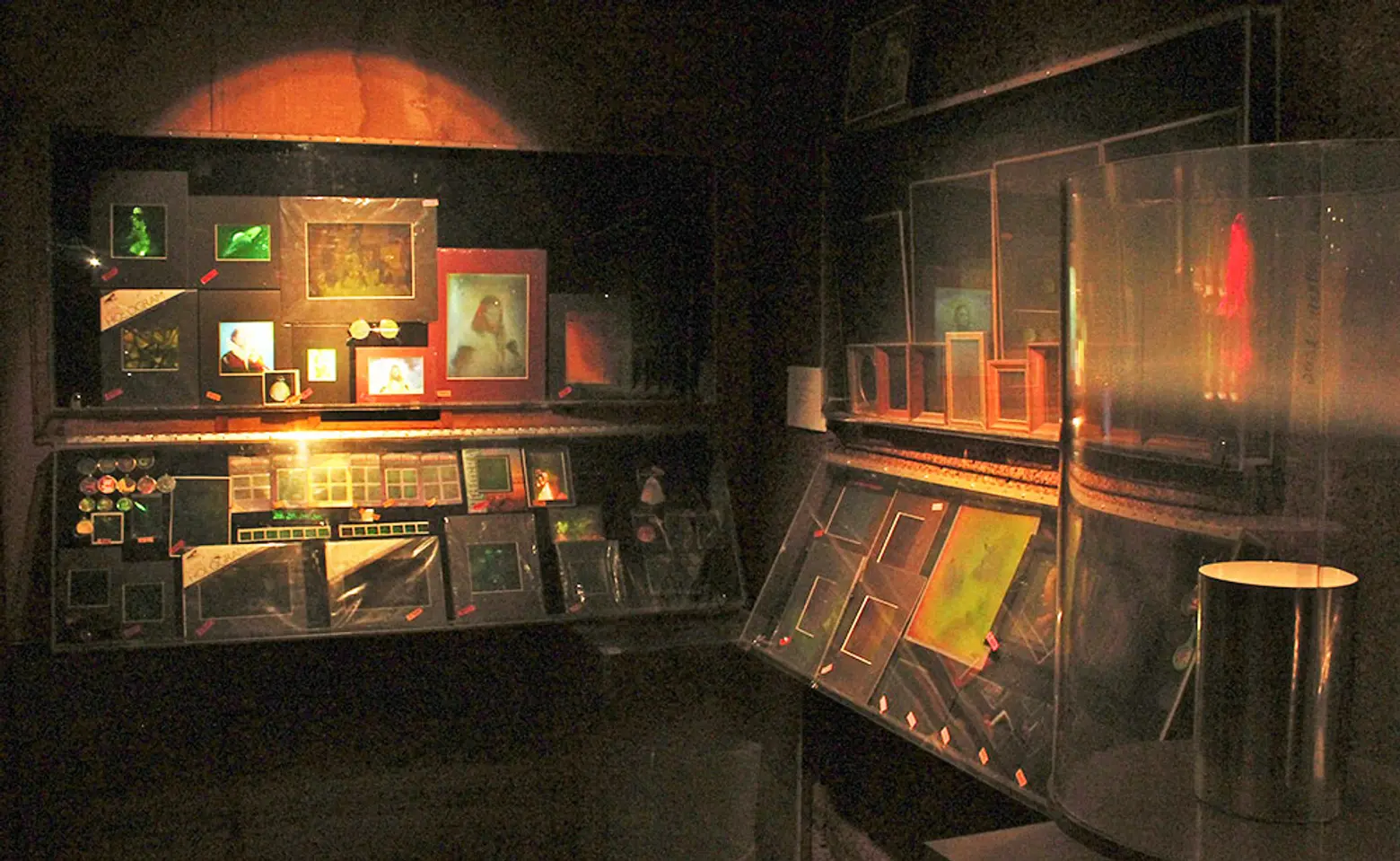
The gallery at Holographic Studios
What’s your favorite part of the job?
I think showing the holograms to people. I get such wonderful feedback doing something that shows people something they didn’t think was possible. When someone tries to grab something in front of them and there’s nothing there, how could you not react to that? There was a period of time when holography had really fallen off, so I was thinking, “Oh my god, no one cares about what I’m doing,” and then suddenly now there’s a resurgence.
On that last note, what has it taken to keep this business open in New York for over forty years?
I think it’s like what Edison believed, that it’s 99 percent perseverance. You have to believe in yourself. This is probably one of the most unexpected, fun places you’ll ever go to. It’s a little hole in the wall that practically no one knows about, but it’s the coolest thing you’ll ever see. The biggest pride is that we’ve been able to sustain a business model that has existed for over four decades. It just helps validate that this is a true medium.
If you could select one hologram you’ve made that epitomizes New York, which one would it be?
Andy Warhol. He was part of everyone’s vision of what New York was. New York allows you to be you, and he was him. When he came in and I worked on his hologram, we were done in under half an hour. It was that easy. He understood what I was doing, and I knew what to tell him to do. It was magic. For me to be able to go to the factory and see that my work was hanging in his office, that was great. What higher homage can you get than being the art in the personal office of somebody who everybody looked at as one of the greats?
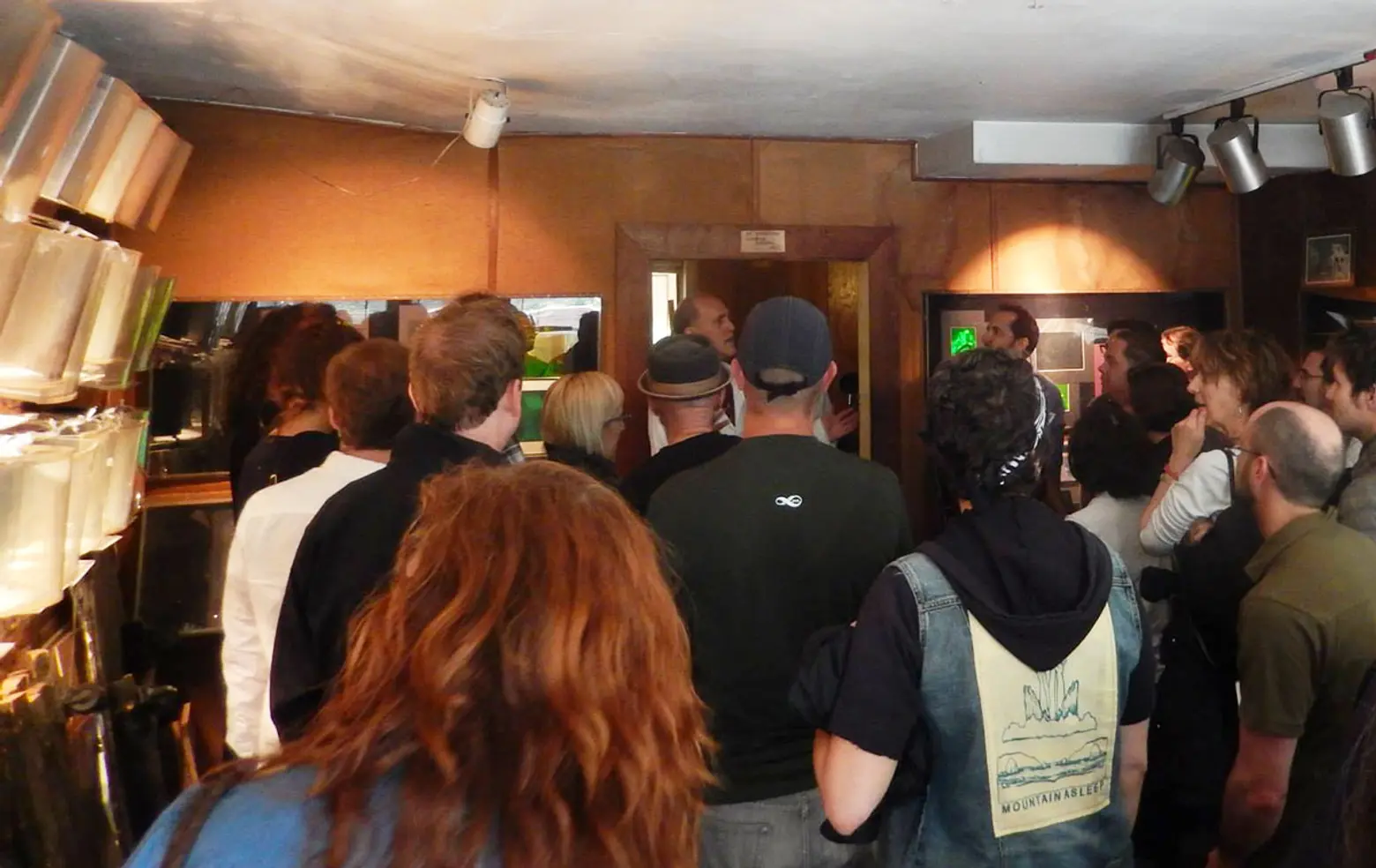
Jason leading a tour at the studio
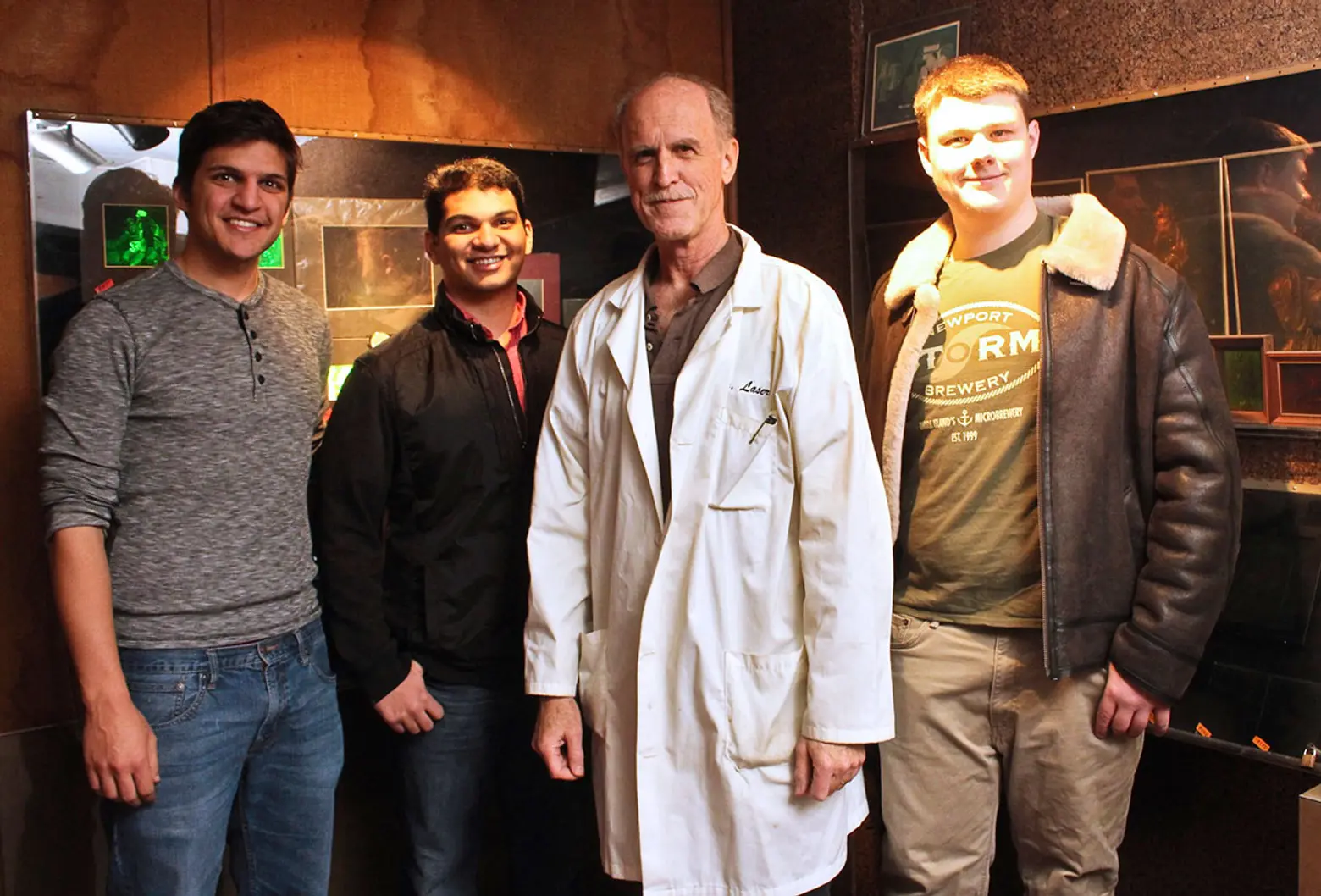
Jason with some college visitors
What does carrying on the hologram tradition and teaching it to the next generation mean to you?
I get to use the hologram as a metaphor for how you live your life, look at the world, and solve problems. I had one intern who became a recording engineer and worked on Madonna’s “Like a Virgin” album. I had another who left here and won the Academy Award for doing the visual effects for “The Matrix,” and another who created the television show “Breaking Bad.” What it really means to me is that I’m able to plant seeds and let them find their greatness. I think working in this medium opens up their minds to their potential.
+++
[This interview has been edited]
Holographic Studios
240 East 26th Street
212-686-9397
[email protected]
RELATED:
